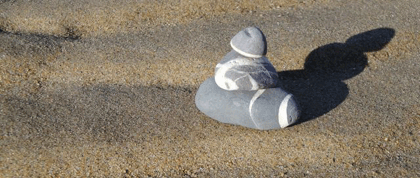This is the third of a three-part posting on the concept of intrinsic sustainability. In this post, Ken Hall describes the intrinsic qualities of sustainable built environments.
Read Part I: What intrinsic qualities enable sustainable societies?
Read Part II: What intrinsic qualities enable sustainable design teams?
In the last two blogs I discussed what it took to create sustainable societies and sustainable design teams. I’ll close this series on the idea of intrinsic sustainability by discussing the most obvious and ubiquitous public expression of a society and its culture: the built environment.
The history of architecture reveals indigenous design solutions that are intrinsically sustainable- they operated on solar income, the materials were local and non-toxic, and comfort was maintained with mass, ventilation, solar energy or seasonal migration.
Today we call this intrinsic quality of sustainability passive design- the ability of a structure to maintain comfort and serve its intended purpose without active heating, cooling, and ventilation (HVAC) systems. The design profession ‘unlearned’ passive design skill with the advent of industrialization and access to cheap fossil fuels, which enabled comfort with active, energetic (and wasteful) HVAC systems.
Nonetheless, passive design is still the primary intrinsic quality of sustainable built environments, and passive design puts a huge premium on the nature of materials and how they are put together. Design performance mandates significantly reduced energy consumption and/or carbon emissions, which in turn require back-to-basics, passive-design thinking -- with preference for the use of natural systems to heat and cool buildings. The goal is to maintain relative thermal comfort across the seasons without the aid of active systems.
Deep green professionals recognize other intrinsic qualities that help to define the nature of sustainable built environments. In addition to incorporating local, non-toxic materials, the design should be both durable and easily dismantled for the reuse of the materials. Durability and design for deconstruction reduce material consumption and embodied energy.
Another emerging intrinsic quality of sustainable environments is resiliency. Sustainable environments need to respond more easily to change in use, climate, and availability of energy. A resilient structure is still usable during a brown out, will maintain relative comfort during increasing periods of extreme weather, and is adaptable to new uses as the needs of the society change.
Passive, durable and resilient structures are intrinsically sustainable. By the nature of their design, they also provide their occupants with a deeper sense of place and connection to the natural environment. They require occupants that are more engaged in maintaining their own comfort -- for example by opening or closing windows, and turning off lights and computers. Passive design nurtures the intrinsic qualities of sustainability in active users of the building.
Importantly, we are not advocating purely passive design principles, but rather that passive design principles are intrinsic to the design, construction and occupancy of sustainable built environments. Passive design principles enable a building to maintain 'relative' comfort and demand less energy for lights, heating, cooling and ventilation, depending on climate and use. Passive design is the foundation of all design performance.
Our goal is not to advocate ‘zero’ energy buildings per se, but rather to have a built environment that meets our cultural energy needs with clean and renewable energy technologies. This will generally require a combination of passive and active systems, such as mixed-mode ventilation that includes natural ventilation and some form of active space conditioning.
These hybrid passive/active structures are more evidence that resiliency is an intrinsic quality of sustainability. Active systems must be resilient enough to easily be dismantled and replaced as more efficient systems become available and our society drives fossil fuel dependence down toward zero with clean renewable energy sources.
In Resilience Thinking, Walker et. al. define resilience as “the capacity of a system to absorb disturbance and reorganize while undergoing change, so as to still retain essentially the same function, structure, identity and feedbacks.” Given the systemic forces of climate disruption, peaking supplies of fossil fuels, water and many other materials, it can be said that resiliency is a primary quality of passive design and goes far beyond the better known concept of sustainability. Resilient structures, communities and ecosystems operating across multiple scale and timeframes are the intrinsic qualities that enable sustainable built environments.
I’ll push that one step further. In this series of blog posts, I’ve discussed the intrinsic qualities for sustainable societies, design teams and built environments. I’ll close with this thought; resilience works as a prime metaphor across all three frameworks I’ve explored over the past two posts. When our societies and design teams exhibit resilience, the result is a built environment that will stand the test of time and sustainability.

